
Back to Sidestreet Bannerworks
June 2000
Larry Herget's Zebco Porter
by Marc Horovitz
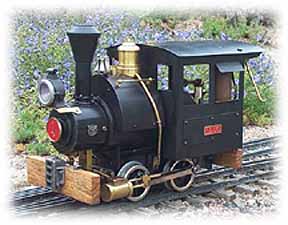
Larry Herget, of Ozark Miniatures, has made some delightful little steamers. They are all double-acting oscillators and are simple to run. SLUG is one of a pair of Porters built in 1997. Like many of Larry's engines, this one is geared, using Zebco fishing-reel gears. The single cylinder is hidden in the smokebox, transmitting its power to the lead axle via a helical pinion engaging a crown gear. The two outside cylinders are dummies, as is the headlight.
The locomotive's boiler is externally gas fired. Flame shields protect the fire from prevailing gales. There's a large fuel tank in the cab that is filled through a hole in the roof. The backhead is well equipped and lacks only a pressure gauge. A displacement lubricator also sits on the cab floor; its drain plug protrudes from the engineer's side of the cab.
Once the engine has been fueled, oiled, and watered, the gas valve is cracked and the fire lit under the boiler. The fire can be seen in the firebox. In a few minutes the safety valve is sizzling. The engine starts remarkably easily. It's easy to control with the throttle on the backhead. The large water glass makes the boiler level easy to read.
SLUG is not reversible. Being a geared loco, it is a powerful engine for its size. It will run for 20+ minutes unattended. There's a boiler-filling valve in the top of the cab so the engine can be kept indefinitely. It's a fun loco and a joy to run.
| Specifications | |
| Builder | Larry Herget |
| Date built | 1997 |
| Gauge | 45mm |
| Scale | 1:20.3 |
| Boiler | Phos-copper-brazed boiler, externally fired (bushings are silver-soldered into the boiler) |
| Fuel | Butane |
| Working pressure | 21 psi |
| Cylinder | One double-acting oscillator |
| Drive | 3.5:1 gear drive to axle |
| Fittings | Safety valve, displacement lubricator, throttle, water glass, Goodall water-filler valve |
| Duration | Approximately 20 minutes |
| Dimensions | Length over end beams: 7.5", width: 4", height: 6.375" over the stack |
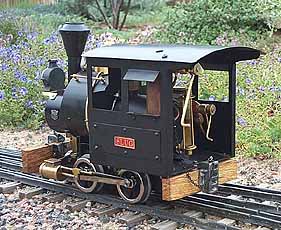
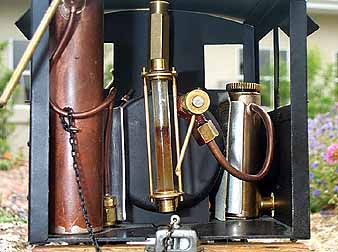
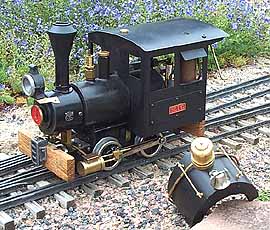
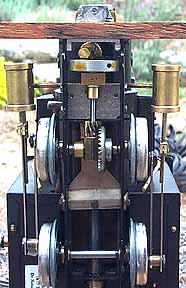 Immediately beneath the front end beam is the end of the piston rod, which engages the flywheel (the silver thing). The flywheel is mounted on the drive shaft, which is geared to the main axle. The burner tube and firebox can also be seen in this picture.
Immediately beneath the front end beam is the end of the piston rod, which engages the flywheel (the silver thing). The flywheel is mounted on the drive shaft, which is geared to the main axle. The burner tube and firebox can also be seen in this picture.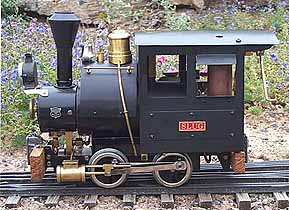
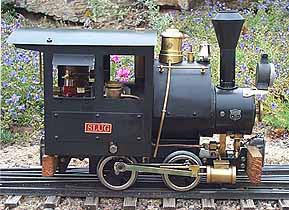
Back to Sidestreet Bannerworks
This page and its contents Copyright Sidestreet Bannerworks, 2000